
The appearance of new moles is considered a fairly common occurrence in pregnant women. Such neoplasms most often occur during the second trimester, when the greatest activity of the hormonal system of the expectant mother is observed. It is the hormonal imbalance that activates the increase and growth of birthmarks and moles on the body of a pregnant woman.
Some important information
The connection between hormones and moles is the most direct, since hormonal changes are the main reasons for the appearance of moles in people. According to medical textbooks, the correct scientific name for a mole is nevus. In simple and accessible language, this is a collection of skin cells filled with melanocytes - cells that are responsible for the pigmentation and color of our skin. Moles can appear at birth, and, more often, during life.
Nevi, by their nature, come in a variety of colors: from flesh-colored to dark brown and even black. The surface of the mole itself is not always smooth and imperceptible; sometimes it can be rough, uneven, convex, and in rare cases, hair can grow in them. All these are variants of the norm, which is not dangerous to humans.
Pregnancy is an individual process for each woman. All expectant mothers tolerate it differently, some get all the “delights” of an interesting position, and some lucky ones don’t even experience toxicosis. If you have moles during pregnancy, this is an absolutely normal phenomenon that is typical for many expectant mothers. This is an absolutely painless process and is not a cause for alarm. Sometimes it happens that moles, on the contrary, disappear. There are also cases where moles appeared during pregnancy and disappeared after childbirth.
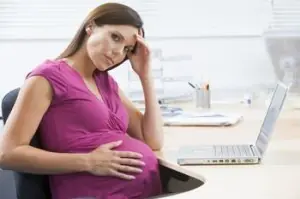
Can moles be removed during pregnancy?
In some cases, doctors recommend removing moles during pregnancy. If your mole suddenly begins to change color or you see that it has changed shape, started to itch or bleed, then it is better to consult a dermatologist for consultation. In the vast majority of cases, nothing bad will be found in you. Changes in moles or the appearance of new nevi do not cause any complications for either the mother or the baby, and they also do not affect the course of pregnancy in any way.
However, in approximately one case out of 100 thousand, an ordinary mole can develop into melanoma. This is an oncological disease that often ends in death. Do not be alarmed; removal of moles during pregnancy is almost never required. To avoid being at risk, keep an eye on your moles and contact a qualified professional immediately if you notice any changes. If the doctor discovers that the cells of the mole are in a precancerous state, the mole will be removed, but only after childbirth. If there is no time to wait and the mole needs to be removed immediately, you will be asked to sign the appropriate papers to familiarize yourself with the possible risks and will undergo surgical excision of the mole immediately.
Removing moles during pregnancy
If the doctor decides that the best option for you is to remove the nevus, do not be alarmed in advance. This procedure is performed under local anesthesia and is completely painless. Modern developments in medicine make it possible to remove unwanted tumors in a variety of ways:
- laser removal;
- cryotherapy - cauterization with intense cold using liquid nitrogen;
- electrocoagulation – exposure to high frequency current;
- radio wave removal;
- surgical excision.
The most optimal way to remove nevus during pregnancy is laser removal. It is suitable for almost everyone, except for cases requiring immediate removal. In this case, only surgical excision is recommended, which will allow the affected area to be cut out at one time, eliminating the possibility that the mole was not completely removed.
Laser mole removal in the medical office of Elena Vladimirovna Salyamkina will completely relieve you of the problematic nevus in one or several sessions. An experienced doctor will assess your condition and give full advice on caring for the mole area. The procedure is completely painless and does not even require anesthesia. Within a couple of weeks, the skin will return to its normal shade, and there will be no traces or marks at the site of the former mole.
Surgical excision is done in the rarest cases, only after a positive conclusion from an oncologist. If the doctor does not like one mole being examined, the entire nevus will be removed completely. The woman will also be prescribed medication.
It is forbidden! Removing birthmarks while carrying a baby is undesirable if the reason is an aesthetic component. During pregnancy, you should not think about your appearance, to the detriment of the health and psychological peace of the unborn baby. Removing birthmarks at home is also extremely contraindicated.
The danger of removing moles lies in the incorrect procedure, which can lead to irreversible consequences. You cannot turn to the services of traditional healers. If you need to remove a mole, do it only in a doctor's office after passing all the necessary tests and under the supervision of experienced doctors. Remember that money cannot buy health. Don't skimp on your family's healthy happiness.

Important Tips
Moles appear in the most unexpected places, even on the tongue and the inside of the cheek. Statistics say that women are more likely to become carriers of moles on the mucous membranes than men. But what to do if a mole has formed in the genital area, especially if it is convex in shape and large in size? An uncomfortable mole in the perineum sometimes becomes a reason for its removal during pregnancy. Especially if it is located in the birth canal area and can be damaged during childbirth.
Prevention of changes in moles during pregnancy:
- A pregnant woman should limit her time exposed to direct sunlight. Also, for women in an interesting position, solariums are contraindicated. The same applies to the period of breastfeeding.
- If your pregnancy has left your skin dry and itchy, consider choosing a moisturizing body wash to prevent your moles from scratching or rubbing.
- Monitor your moles in areas at high risk of mechanical damage.
- Carefully follow all the recommendations of your gynecologist and take all the necessary vitamin complex. Some dermatologists associate vitamin deficiency and folic acid deficiency with the appearance of new nevi on the body of a pregnant woman.
Concluding all of the above, we can conclude that pregnant women should not be afraid of the appearance of new moles on the body. It is important to simply monitor your nevi, monitor changes in their color, size, appearance of cracks, discharge, itching or peeling. Remember that proper skin care is a guarantee of its health. Use sunscreen and apply moisturizing lotion after your bath. The risk of complications with moles with such excellent care is almost impossible.
Each new mole that appears during pregnancy causes a lot of concern for the expectant mother. Meanwhile, nevi, formed during this period is a completely normal phenomenon, which is explained by the changes occurring in the body of womens.
Why do moles appear in a pregnant woman?
The reason new moles appear during pregnancy is hormonal changes.. We are not talking about disruptions in the functioning of the endocrine system, but about a surge in hormonal activity. A pregnant woman's body produces a huge amount of hormones - they are necessary for the formation of the fetus and its growth. In this regard, many new moles appear, indicating the normal functioning of a woman’s endocrine system.
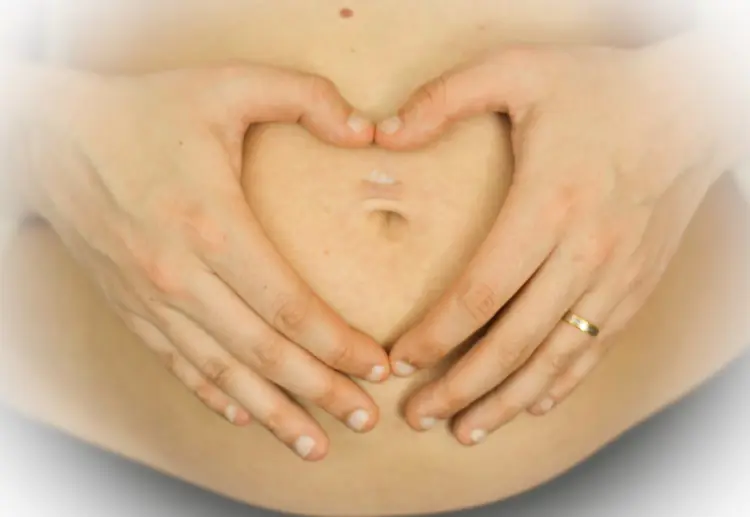
Photo 1. The appearance of new moles during pregnancy is absolutely normal. Source: Flickr (Mélisa Lefèbvre).
Some of them may disappear after breastfeeding endswhen hormonal levels return to normal; others will remain forever.
Especially often during pregnancy vascular nevi appear. This is due to an enlargement of the uterus and an increase in the size of the abdomen, as a result of which the skin stretches and the blood vessels experience increased stress. With a lack of vitamins, especially vitamin C, capillaries become fragile and brittle. Vascular ruptures occur. These small subcutaneous hemorrhages look like red moles.
Note! Moles are benign skin formations that rarely degenerate, only under the influence of unfavorable conditions.
Moles during pregnancy: is it dangerous?
Moles in pregnant women, both new and “old,” can increase in size. The growth process itself does not mean pathology: in most cases it is one of the manifestations of hormonal changes. During pregnancy, the body produces more melanin, the skin pigment responsible for the color of nevi. Therefore, moles during this period can not only grow, but also darken. A consultation with an oncodermatologist will help dispel doubts..
The danger comes from moles that:
- hurt;
- itchy;
- grow very quickly;
- bleed;
- get wet;
- changed shape (edges became uneven), color;
- became more convex, lumpy;
- became inflamed and began to peel off.
Convex moles that were flat before pregnancy, as well as those with red rims around them, should also cause concern.
Formations of unusual shape, color, size, structure - a reason to contact a specialistwho will conduct diagnostics (visual examination, laboratory tests) and give recommendations.
Is it possible to remove moles?
There are no direct contraindications to the removal of nevi during pregnancy. However, any surgical intervention in the body of the expectant mother can have a negative impact on the development of the fetus. That's why delete moles should only when they are dangerousAnd:
- precancerous formations;
- dysplastic nevus, which can easily turn into precancer with the slightest damage;
- moles with a high risk of injury if they are located in places of frequent friction, mechanical influences: armpits, groin, on the line of bra straps. Hanging moles are of particular concern because they are the easiest to damage. An injured mole is fertile ground for the development of melanoma;
- formations found in the birth canal. Such moles can be damaged during labor, so it is better to remove them.
In all other cases, the doctor will recommend refraining from removing: This can be done at any time after the baby is born..
Mole removal methods
- surgical excision with a scalpel. The safest and most acceptable method for the expectant mother. Can be used for benign and malignant forms of formations. Pain is relieved with local anesthesia. Significant postoperative scars may remain, since the mole is excised along with 3-5 cm of adjacent tissue;
- laser removal. Among the advantages are painlessness and bloodlessness. However, the method is only suitable for eliminating benign nevi. It is impossible to do a histological analysis of the tissue: the mole is completely evaporated. Can be used during pregnancy;
- cryodestruction with liquid nitrogen. Suitable for removing superficial moles only. Disadvantages - the formation of blisters, the inability to examine the removed tissue, long-term rehabilitation. It is not recommended to use during pregnancy;
- electrocoagulation high frequency current. A painful method, leaving scars and scars. Only small moles can be removed. Pregnancy is among the contraindications;
- radio wave removal tungsten filament. Superficial moles are removed and anesthesia is applied. Can be used during pregnancy.
The doctor decides which method to use, based on the potential risks for the mother and unborn child.
Note! The best time of year to remove moles is winter or off-season, when solar activity is minimal.

Photo 2. A dermatologist will help resolve doubts about the danger of moles. Source: Flickr (Shannon Schnieder)
Precautionary measures
In many cases, genetic predisposition and trauma play an important role in the degeneration of benign nevi. However, the main reason for this is solar radiation. To avoid problems with moles during pregnancy, experts advise:
- avoid exposure to ultraviolet radiation during the daytime;
- cover the location of moles light cotton clothing;
- protect your face from the sun wide-brimmed hats, dark glasses;
- use external sunscreens.
If you discover suspicious moles, you should not exhaust yourself with doubts and worries, especially during pregnancy: consultation with a dermatologist will quickly clarify the situation regarding the nature of the neoplasm.
Common myths regarding moles during pregnancy, such as: the appearance of a mole in a baby in the same place where it formed on the mother during pregnancy; the appearance of a birthmark in a child if the mother clutches her stomach when frightened; the fate of moles that appear during pregnancy - nothing more than superstition. A woman should not worry about unfounded beliefs - it is better to provide herself with maximum positive emotions that are useful for both her and the unborn baby.
During pregnancy, the female body undergoes many changes. One of the changes is the appearance of moles, which can worry a woman. Most often, there is no reason for concern, since nevi are formed due to hormonal changes in the body. But sometimes this can be due to other circumstances and can be dangerous. Therefore, it is worth finding out why such formations appear, and in what cases it is advisable to consult a doctor.
Reasons for appearance
The appearance of moles is usually associated with increased exposure to ultraviolet radiation on the skin. Another reason is hormonal imbalance. They can also form under the influence of age-related changes, for example, during adolescence. During this period, the production of individual hormones begins, which leads to the formation of nevi.
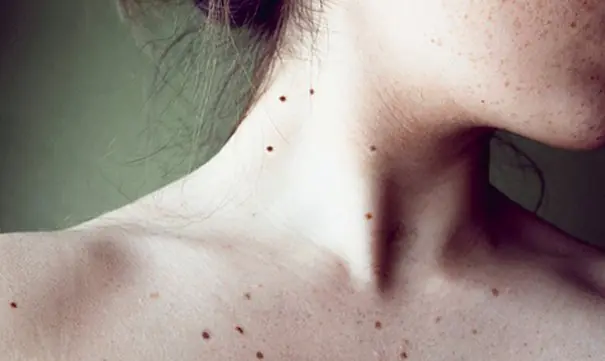
Pregnancy causes many changes in the body. One of them is a change in hormonal levels. This is why pregnant women develop moles.
After the birth of a child, the hormonal system returns to its normal state, due to which many neoplasms are eliminated. Although they may remain, and this is also a variant of the norm. If there are no adverse symptoms, there is no reason for alarm.
Danger
Since the formation of moles during pregnancy is a natural phenomenon, they do not pose any danger. In most cases, they resolve themselves after the birth of the child. But even if this does not happen, in the absence of pathological symptoms there is no danger. Moles are benign neoplasms, so there is no need to worry about their presence on the skin.
But a woman should consult a doctor to make sure there are no risks. Sometimes nevi have the ability to become malignant. Since a pregnant woman’s body is weakened, there is a possibility of exacerbation of any pathologies. If there is a predisposition to cancer, then they can begin to develop during pregnancy, and the appearance of nevi becomes one of the first symptoms.
Also, the degeneration of benign formations can begin due to injury or exposure to ultraviolet radiation.
You should consult a doctor under the following circumstances: strange color of a mole or its unexpected change, itching in the area of the nevus, burning, swelling of the skin, bleeding of the neoplasm.
It is also worth consulting with a specialist if too many moles form.
Increase in size
Although new moles during pregnancy are not dangerous, some caution is required. It is necessary to pay attention to emerging negative symptoms. One of them is increasing size. This may be a sign of infection or degeneration into a malignant tumor. In this case, you need to observe not only new growths, but also those that were on the body before.
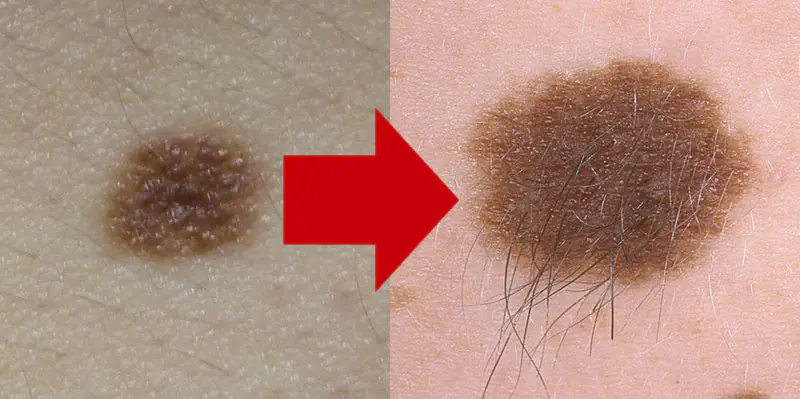
If the mole has increased in size, you need to talk to your doctor and get examined. It is especially important to do this if there are additional adverse symptoms, such as pain, itching, bleeding.
Unfavorable symptoms do not always indicate disease. The growth of a nevus or a change in its color can be explained by hormonal changes in the body. But sometimes these changes trigger an oncogenic process, which can be very dangerous. Therefore, you should undergo an examination.
Preventive measures
The formation of a nevus during gestation is considered normal. But under the influence of unfavorable factors, problems may arise. Therefore, it is worth taking precautions.
These include:
- Protecting the tumor from sunlight. Exposure to ultraviolet radiation can cause cells to degenerate into a malignant tumor. And since a pregnant woman’s immunity is weakened, the risk increases. Therefore, moles on the body should be covered with clothing. You should also refrain from visiting the solarium and sunbathing.
- Prevention of injury. If the integrity of a mole is damaged, an infection may enter the bloodstream. The inflammatory process can cause growth in the size of the tumor and its degeneration into a malignant tumor. Therefore, it is necessary to prevent mechanical damage to the surface.
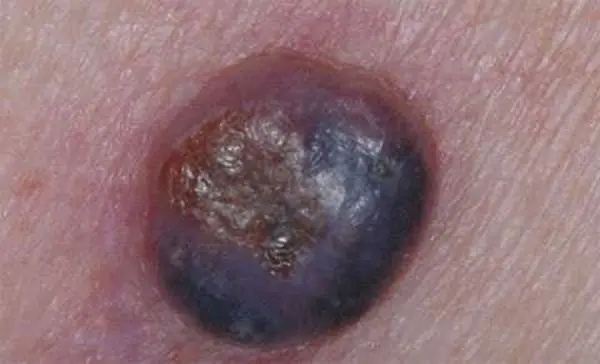
Areas of skin where there are nevi should not be scratched. This can lead to injury and infection. If the formation itches, you need to be examined. The appearance of fluid in the tissue of a mole is also a cause for concern. It is unacceptable to squeeze it out.
Is deletion allowed?
Removing moles during pregnancy is not advisable. This is explained by the fact that some of them may disappear after stabilization of hormonal levels. This is also due to the unpredictability of the consequences of any intervention in the body. If in normal conditions recovery after surgery to remove a nevus occurs easily, then the expectant mother may experience problems. It is also unknown how such exposure will affect the child.
However, such procedures during gestation are not prohibited. Mole removal is carried out using minimally invasive methods that have almost no effect on the body. During the manipulation, local anesthetics are used, which are considered safe. Therefore, there are no direct contraindications for intervention, and skin growths can be removed.
In some cases, mole removal is necessary. The procedure may be prescribed under the following circumstances: the likelihood of trauma to the tumor, the location of the nevus in the perineal area, a high risk of degeneration into a cancerous tumor.
These situations pose a risk to the health of both the woman and the child. Therefore, it is better to remove the tumor. But the decision about this must be made by the doctor, having assessed the features of the clinical picture.
The formation of moles during gestation is a common phenomenon. Due to the lack of knowledge on this issue, women began to come up with their own explanations for this process. Most of them have not been scientifically confirmed, but are still popular among the population.
Such myths include:
- If, while carrying a child, a mole forms on the body of the expectant mother, then the baby will also have one, and in the same area. There is no evidence to support this opinion. Most children emerge with clear skin without any growths. They begin to form by adolescence, and their location can be any. Although, if there is a genetic predisposition, a similar outcome is possible, and if the mother had many moles, they may appear in the child.
- Based on the location of the nevi, predictions can be made regarding the fate of the mother and baby. This myth is also not confirmed. There is no relationship between skin spots and life events.
- A pregnant woman can cause nevi to appear on the baby's body. This is supposedly possible if, in severe fright, she grabs some part of her body. According to myth, the baby will form a birthmark in this place. But this assumption is wrong. Expectant mothers should not worry about this; in their condition, it is harmful to worry.
Moles on the body are a harmless phenomenon, even if they form in a pregnant woman. This is due to changes in hormonal levels. When it returns to normal, most of the tumors will disappear. Those nevi that remain are also not dangerous if they are not accompanied by pathological symptoms. Removing moles during pregnancy is rarely practiced if there is a threat to the health of the mother and baby.



